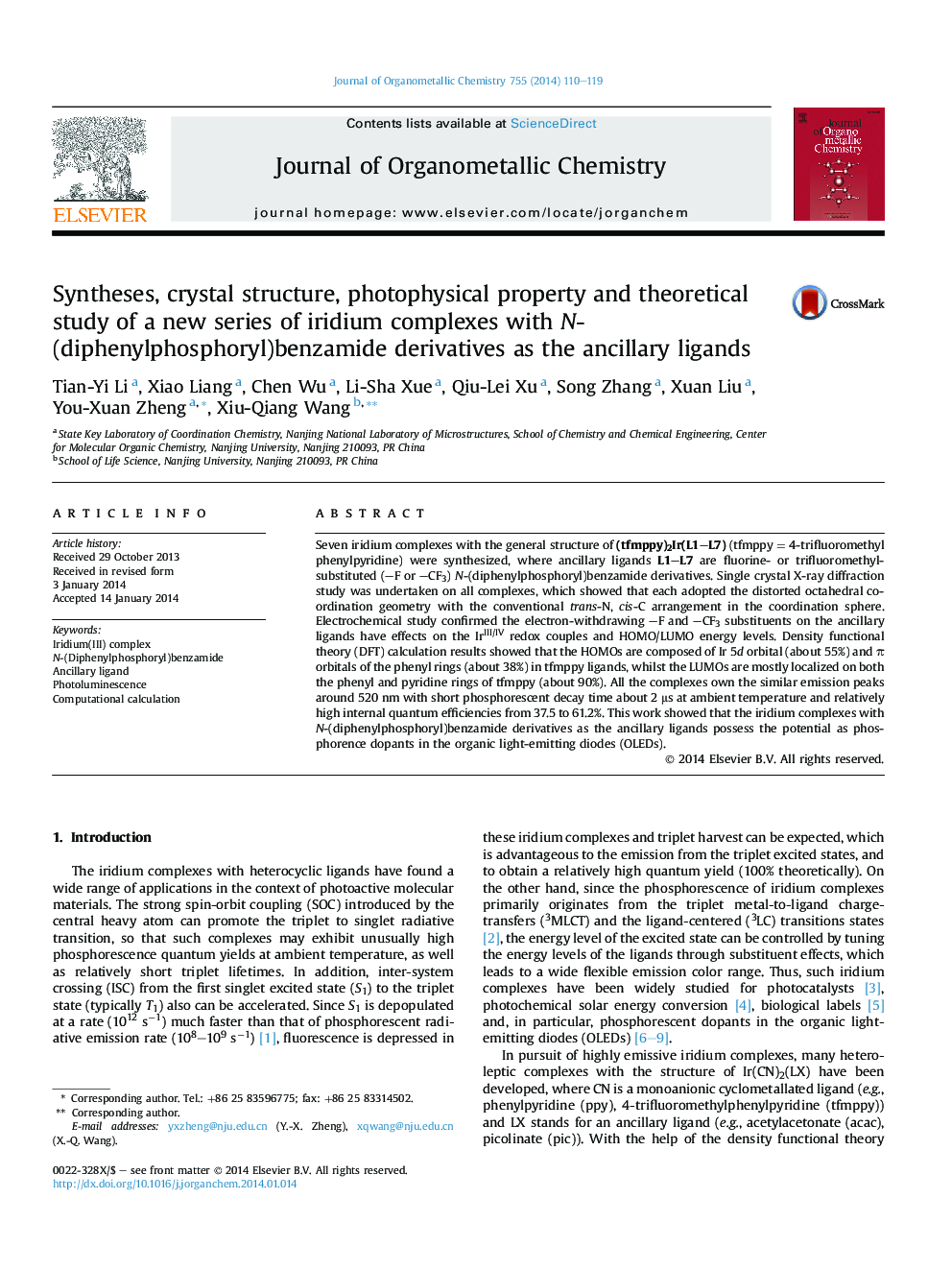| Article ID | Journal | Published Year | Pages | File Type |
|---|---|---|---|---|
| 1324139 | Journal of Organometallic Chemistry | 2014 | 10 Pages |
•We synthesize Ir(III) complexes with N-(diphenylphosphoryl)benzamide derivatives.•The complexes emit around 520 nm with various intensities and quantum efficiencies.•The electronic structures of complexes are theoretically investigated.
Seven iridium complexes with the general structure of (tfmppy)2Ir(L1–L7) (tfmppy = 4-trifluoromethylphenylpyridine) were synthesized, where ancillary ligands L1–L7 are fluorine- or trifluoromethyl-substituted (–F or –CF3) N-(diphenylphosphoryl)benzamide derivatives. Single crystal X-ray diffraction study was undertaken on all complexes, which showed that each adopted the distorted octahedral coordination geometry with the conventional trans-N, cis-C arrangement in the coordination sphere. Electrochemical study confirmed the electron-withdrawing –F and –CF3 substituents on the ancillary ligands have effects on the IrIII/IV redox couples and HOMO/LUMO energy levels. Density functional theory (DFT) calculation results showed that the HOMOs are composed of Ir 5d orbital (about 55%) and π orbitals of the phenyl rings (about 38%) in tfmppy ligands, whilst the LUMOs are mostly localized on both the phenyl and pyridine rings of tfmppy (about 90%). All the complexes own the similar emission peaks around 520 nm with short phosphorescent decay time about 2 μs at ambient temperature and relatively high internal quantum efficiencies from 37.5 to 61.2%. This work showed that the iridium complexes with N-(diphenylphosphoryl)benzamide derivatives as the ancillary ligands possess the potential as phosphorence dopants in the organic light-emitting diodes (OLEDs).
Graphical abstractSeven iridium complexes using N-(diphenylphosphoryl)benzamide derivatives as ancillary ligands were synthesized and investigated. All complexes own the similar emission peaks around 520 nm with various intensities and quantum efficiencies from 37.5 to 61.2%, suggesting the effects of the different substituted ancillary ligands.Figure optionsDownload full-size imageDownload as PowerPoint slide
